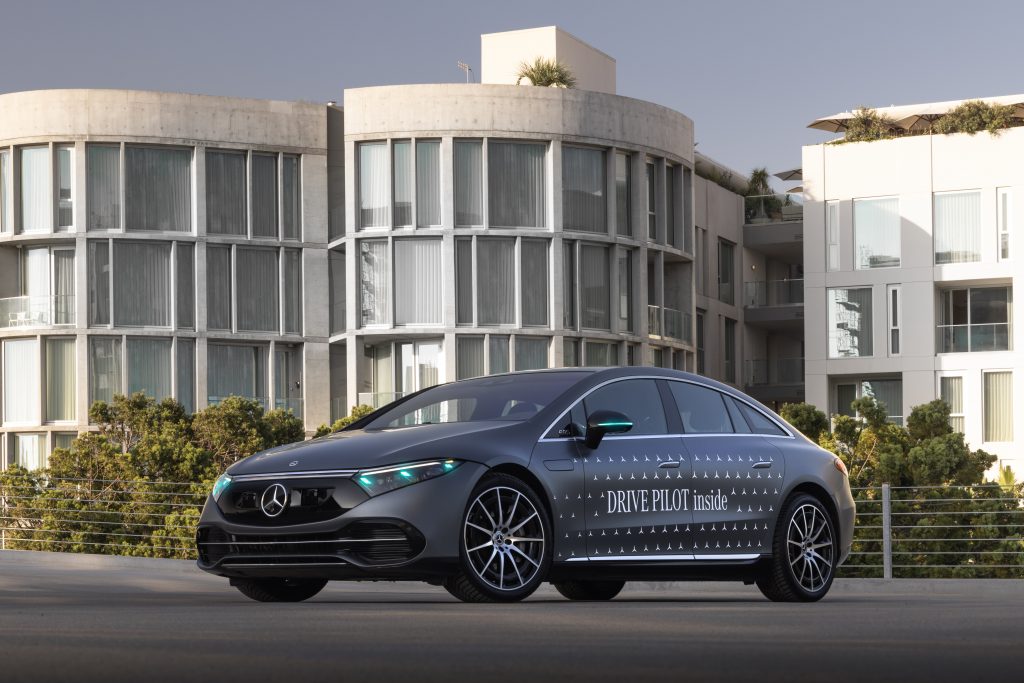The Historic Road Of Mercedes-Benz To Autonomous Vehicles
Giancarlo Perlas October 25, 2023Mercedes-Benz, a name already synonymous with luxury automobiles, has recently made history by becoming the first car manufacturer worldwide to secure approval from both Nevada and California for Level 3 autonomous vehicles on public roads. The announcement has ignited a fresh wave of interest in the innovative realm of self-driving cars. However, what many may not realize is that Mercedes-Benz’s journey into autonomous driving dates back several decades.

The Untold Autonomous Driving Odyssey
In the 1980s and 1990s, Mercedes-Benz was quietly conducting groundbreaking research and development in the field of autonomous vehicles. Their ambitious undertaking, known as the Eureka Prometheus project, marked the dawn of an era that was way far ahead of its time.
In cooperation with various European car manufacturers, electronics producers, and academic institutions, Daimler-Benz embarked on this 749 million euro (inflation-adjusted) project, which remains one of the most extensive endeavors in the history of self-driving cars.
From Brainpower to Horsepower
During the project, Mercedes-Benz unveiled a series of driverless prototypes, the most remarkable of which was a re-engineered W140 S-Class. This autonomous vehicle could traverse over 1,043 miles from Munich to Copenhagen without human intervention, a feat that astounded the automotive world.
The technology behind this marvel relied on a fusion of saccadic computer vision, multiple microprocessors, and probabilistic algorithms that enabled real-time responses to road and traffic conditions.
A Supercomputer on Wheels
To grasp the sheer complexity of this endeavor, it’s crucial to note that the computing power used in this autonomous S-Class back in the early 1990s can now be encapsulated within the average smartphone. To achieve this level of autonomy, Mercedes-Benz incorporated sixty transputers, an advanced microprocessor architecture with integrated memory from that era, essentially transforming the S-Class into a mobile supercomputer.
The autonomous W140 S-Class reached a remarkable top speed of 115 mph on the Autobahn, confidently navigating past other vehicles during its extensive road trip. Equipped with technology that could automatically track other vehicles and read road markings, it laid the foundation for modern safety systems found in certain Mercedes-Benz cars today, including Pre-Safe, Distronic Plus with Steering Assist, Stop&Go Pilot, and Magic Body Control.
A Vision of Safety
It’s important to recognize that Mercedes-Benz’s foray into autonomous driving wasn’t aimed at eliminating human drivers. Instead, their primary objective was to demonstrate that accidents could be substantially reduced through the power of computer vision.
Berthold Ulmer, a graduate engineer at Daimler-Benz Vehicle Research, emphasized that “automatic collision prevention” was the core objective of the Prometheus sub-project, reaffirming their commitment to offering an accident-free driving experience.
Beyond Prometheus
While the Eureka Prometheus project concluded in 1994, Mercedes-Benz continued its autonomous research independently. In recent years, the automaker has made remarkable progress with its in-house R&D program.
This eventually culminated in the Mercedes-Benz S500 Intelligent Drive concept car. Then in 2023, further tweaking finally resulted in the first California and Nevada-approved Level 3 autonomous standard production vehicles in the United States, the Drive Pilot-equipped Mercedes-Benz S-Class and EQS.
Driving Towards the Future
Mercedes-Benz’s journey through the decades showcases a relentless pursuit of innovation and a commitment to making autonomous driving safer and more accessible. Today, as they venture into uncharted territory with Level 3 autonomous vehicles, the road ahead seems even more exciting, promising an era where driving is not only about luxury and performance but also about safety, driver comfort, and innovation.




